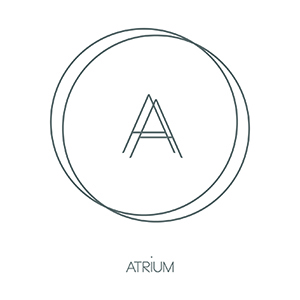Dublin, with its vibrant streets steeped in history, has long been a city where tradition meets transformation. Its cultural landmarks, from cobblestone streets to centuries-old pubs, offer a glimpse into a past that has shaped its present. Amid these historical treasures lies a lesser-known aspect of Dublin’s heritage: the role of offline and online casinos. These establishments, though often overshadowed by other cultural icons, have played a fascinating part in the city’s social history.
Casinos in Dublin are more than just places of entertainment; they reflect the changing tides of societal norms and economic growth. From the modest card rooms of the past to the grand gambling halls that emerged later, these venues have mirrored Dublin’s evolution as a city where leisure and social connection intertwine. Exploring the history of Dublin’s casinos reveals not only the allure of games of chance but also the cultural and legislative forces that shaped their rise.
The Origins of Gambling in Dublin
Gambling has deep roots in Irish history, with references to games of chance appearing in ancient folklore and literature. From simple wagers among villagers to organized betting at horse races, gambling was a widespread pastime that reflected Ireland’s communal spirit. By the 18th century, Dublin began to see the emergence of dedicated gambling houses, where patrons gathered not just for the thrill of the games but also to socialize in an era when public entertainment was limited.
As the popularity of gambling grew, so did the demand for more structured establishments. The 19th century marked a turning point, with casinos evolving from informal gatherings to elegant venues catering to Dublin’s middle and upper classes. These spaces offered a variety of games, from dice to card tables, and quickly became centers of activity for those seeking entertainment in a sophisticated setting.
Legislation, however, began to intervene, shaping how these establishments operated. The Gaming Act of 1845 aimed to regulate gambling, introducing restrictions to curb illegal practices while allowing legitimate establishments to flourish. This dual impact ensured that gambling remained accessible but controlled, paving the way for Dublin’s casinos to develop a reputation for refinement and order. Such legal frameworks not only influenced the nature of gambling but also reflected societal attitudes toward leisure and morality during the time.
Iconic Old Casinos and Their Legacy
The history of Dublin’s casinos is enriched by iconic establishments that have left a lasting mark on the city’s cultural and social landscape. One such example is Casino Marino, a name that often confuses visitors due to its association with gambling. In reality, Casino Marino is a stunning 18th-century neoclassical building designed as a pleasure house rather than a gambling venue. Despite its misnomer, its intricate architecture and historical significance highlight the luxurious aesthetic often associated with early casino culture.
Dublin’s first operating casinos were far more than simple gambling houses. The Hibernian Club Casino, for instance, was renowned for its exclusivity, attracting Dublin’s elite with its luxurious interiors and card rooms. The Shelbourne Saloon, on the other hand, combined gambling with live performances, creating a vibrant atmosphere that appealed to a broader audience. Lastly, The Grafton Street Casino was famed for its innovative games and prime location, becoming a key fixture in Dublin’s bustling city center. These establishments were not just venues for gaming but symbols of sophistication and leisure in their time.
Notable figures and events added further mystique to these casinos. Writers, politicians, and artists often frequented these venues, intertwining their legacies with the city’s cultural narrative. From legendary high-stakes games to tales of fortunes won and lost, the stories tied to Dublin’s old casinos are as captivating as the games themselves, capturing an era where elegance and chance collided.
Social and Cultural Significance
Casinos in Dublin were central to the city’s nightlife, serving as more than places to gamble they were vital hubs of community life. These venues brought together individuals from all walks of life, offering an escape from daily routines and a space for social interaction. In the early 20th century, casinos became gathering spots for Dublin’s creative and intellectual circles, fostering a sense of camaraderie among patrons who shared a love for games of skill and luck.
The traditions and customs that emerged in these spaces added to their charm. Each venue had its unique quirks, from the distinct playing styles of its patrons to the celebratory rituals performed after significant wins. The mix of local and international games created a lively atmosphere, making these casinos a reflection of Dublin’s open and evolving cultural identity.
Key Social Contributions of Dublin’s Casinos
- Community Gathering Spaces: Encouraged social interaction and camaraderie.
- Cultural Melting Pots: Brought together diverse patrons, from artists to aristocrats.
- Innovation in Gaming: Introduced unique rules and formats to popular games.
- Philanthropic Efforts: Hosted charity events and supported local causes.
However, public sentiment towards gambling evolved over time. While casinos were once celebrated as hubs of sophistication, they later faced criticism amid moral debates. Despite these challenges, their enduring popularity underscores their integral role in Dublin’s nightlife and cultural heritage.
Preserving Dublin’s Gambling Legacy
The oldest casinos in Dublin are more than relics of the past; they are living testaments to the city’s rich cultural identity. Their stories, from architectural marvels to tales of legendary games, offer a unique lens through which to view Dublin’s social history. Preserving these narratives ensures that future generations can appreciate the vibrant and diverse legacy of Dublin’s gambling culture.
Efforts to document these stories and maintain the architectural heritage of historic venues are vital. Through continued research, storytelling, and restoration, Dublin can celebrate this intriguing chapter of its history while keeping the spirit of its old casinos alive for years to come.
